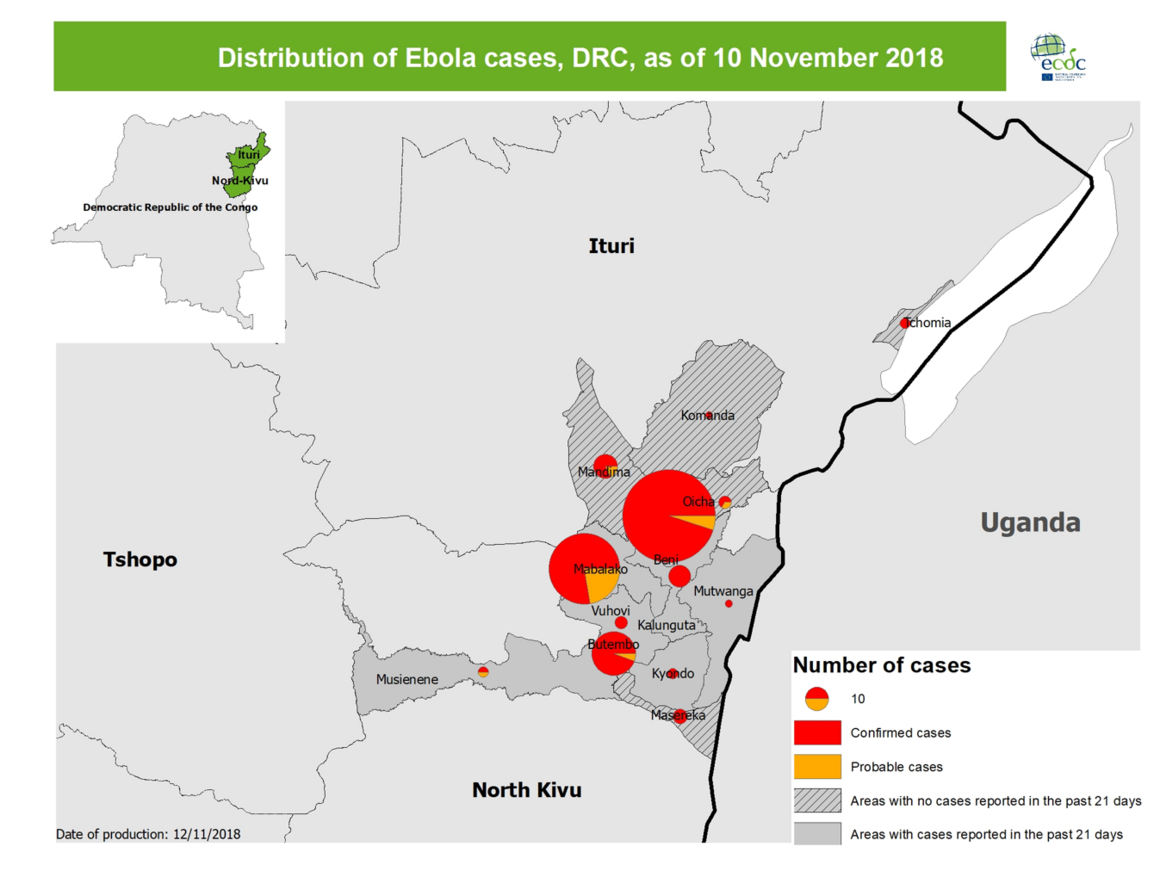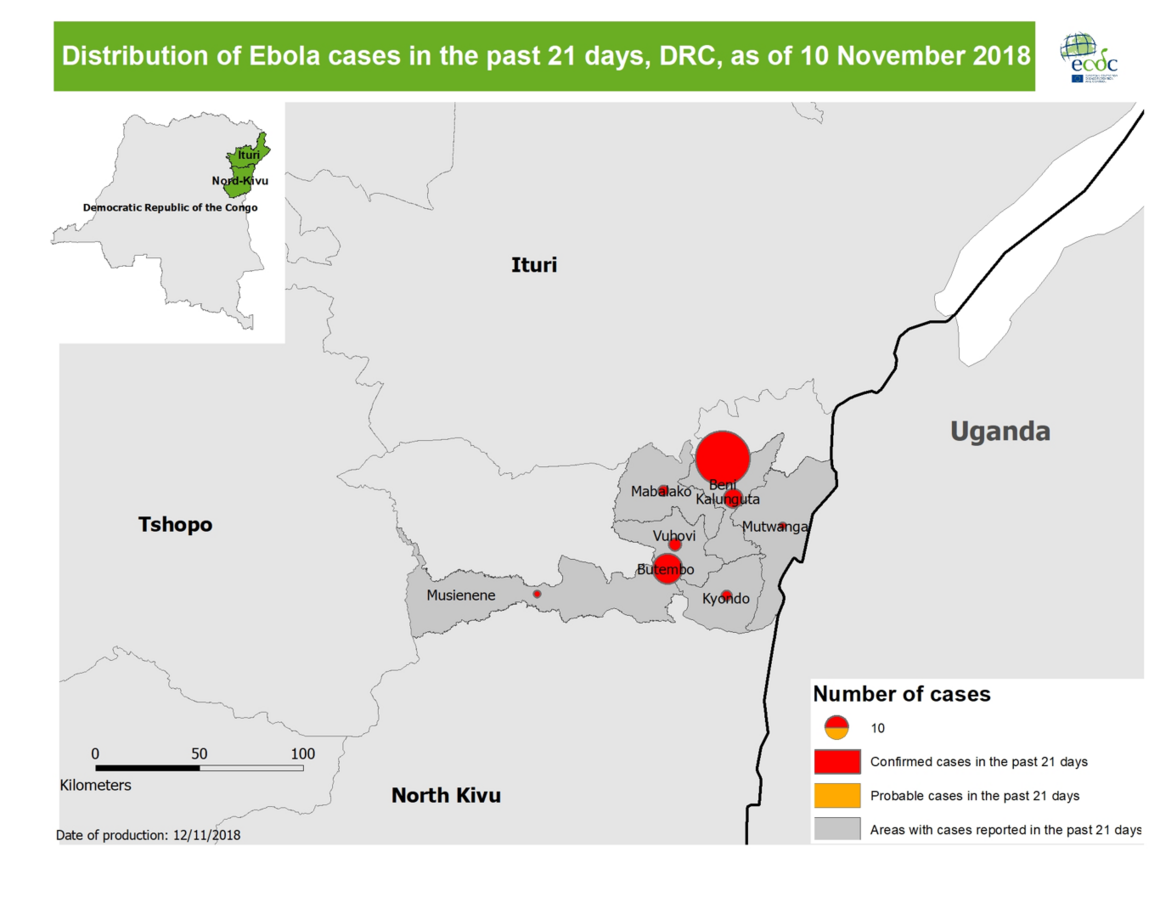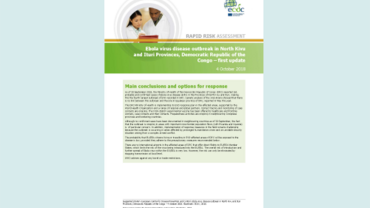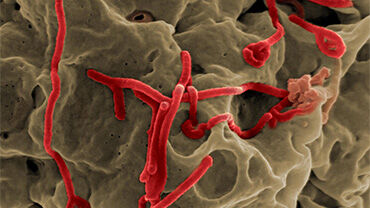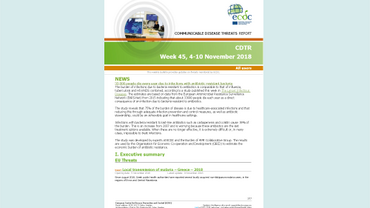Epidemiological update: Ebola virus disease outbreak in North Kivu and Ituri Provinces, Democratic Republic of the Congo
Since May 2018 and as of 10 November 2018, there have been 329 Ebola virus disease cases (294 confirmed, 35 probable), including 205 deaths (170 of which were confirmed cases).
This is the largest-ever outbreak reported in the Democratic Republic of the Congo.
Thirteen health zones in two provinces have reported confirmed or probable Ebola virus disease cases, including, Beni, Butembo, Mabalako, Masereka, Mutwanga, Musienene Oicha, Kalungata, Kyondo and Vuhovi health zones in North Kivu Province and Komanda, Mandima and Tchomia Health Zone in Ituri Province.
As of 4 November 2018, 27 health staff have been infected and there have been three deaths amongst healthcare workers.
On 17 October 2018, the International Health Regulations Emergency Committee concluded that the epidemic does not at this stage constitute a public health emergency of international concern. However, as of 8 November 2018, the WHO assessment states that the risk of spread remains very high at national and regional levels.
ECDC assessment
While no confirmed cases in neighbouring countries have been documented as of 26 October 2018, the fact that the outbreak is ongoing in areas with an important cross-border population flow with Rwanda and Uganda remains of particular concern. In addition, the implementation of response measures in the field remains challenging because the outbreak occurs in areas affected by prolonged humanitarian crises and an unstable security situation arising from a complex armed conflict.
The probability of exposure to the disease for EU/EEA citizens who live or travel in Ebola virus disease-affected areas of the Democratic Republic of the Congo is low provided they adhere to recommended precautionary measures. The overall risk of introduction and further spread of Ebola virus within the EU/EEA is very low. However, the risk can only be eliminated by stopping transmission on a local level.
ECDC published an updated rapid risk assessment on 5 October 2018.
